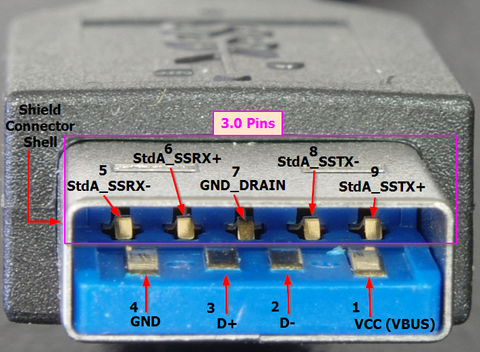Main Differences Between USB 2.0 and 3.0
1) USB 2.0 vs 3.0 Physical Difference
You may wonder: does USB 2.0 and USB 3.0 look the same? Is there any physical difference between them? How to distinguish USB 2.0 and USB 3.0 from their physical characteristics?
Actually, it is not difficult to tell their physical difference. The USB 2.0 Connectors is colored white or black inside, while the USB 3.0 is colored blue inside.
You can identify a USB 3.0 port by checking its physical port. A USB 3.0 port is distinguishable by its blue colored insert and it is usually equipped with a 3.0 logo. You can also open Windows Device Manager. Expand Universal Serial Bus Controllers and check if there is an item that has USB 3.0 in the title. If YES, it means you have USB 3.0 port on the PC
So if you want to find out whether the USB port on your computer or USB flash drive is 2.0 or 3.0, you can distinguish them by the USB port color inside.
2) Another physical difference between USB 2.0 and USB 3.0 is the number of wire connections.
USB 2.0 has a total of 4 connector wires, supporting half-duplex communication. As for USB 3.0, it has a total of 9 connector wires. With these five additional wires, it increases the bandwidth of USB 3.0 by permitting two-way communications simultaneously.

3) USB 2.0 vs 3.0 Speed
Compared with USB 3.0, the transfer rate of USB 2.0 is extremely slow, which is at 480 megabits/s (60MB/s). Although it is a bit slow for data transfer, for connecting peripherals such as keyboards, mice or headsets and the similar, the speed is sufficient.
As for USB 3.0, it is approximately 10 times faster than USB 2.0 with its data transfer rate up to 5 Gbit/s(625MB/S).
However, that‘s just a theoretical number which points out the maximum data transfer rate through a USB port. Well, in reality, the transfer speed of USB 2.0 and USB 3.0 depends on the specific drive. For example, USB drives will be limited by the speed of their flash memory.


